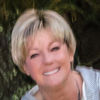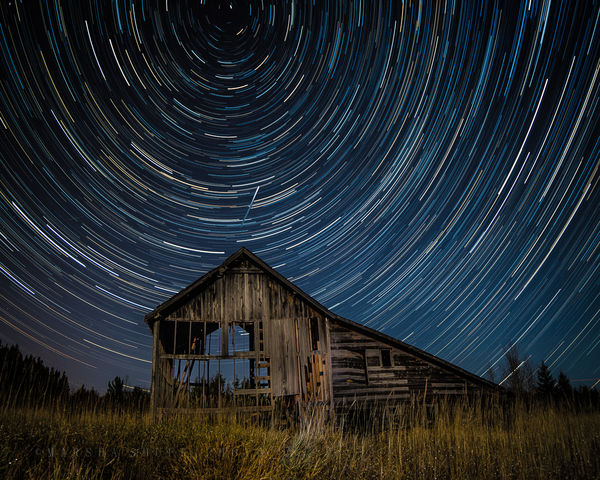Opinion on Nikon lens for night photography
Dec 6, 2016 10:10:27 #
Colinus wrote:
Hey guys! New kid on the block. I'm looking for opinions on using the Nikon 16-35 f/4G for night skies. Most of my day time shots are landscape and I'm comfortable that this lens will serve me well. But, I've not been able to find much on its use for night photography and am looking for anyone with experience using this lens at night. Thanks for any and all help and I'm grateful for other info I've picked up while being a voyeur of this site. If curious, camera is D810.
Perhaps you can get by with it but frankly I would be inclined to use something with at least an f/2.8 capability.
Dec 6, 2016 10:11:43 #
Good lens, but I don't think any of them will top the Nikon 14-24mm. I use this for night photography on a D610 and the pictures are amazing. Super sharp and super wide! And super expensive!
Dec 6, 2016 10:32:49 #
Colinus wrote:
But, I've not been able to find much on its use for night photography and am looking for anyone with experience using this lens at night. Thanks for any and all help and I'm grateful for other info I've picked up while being a voyeur of this site. If curious, camera is D810.
That lens is no different from using any other lens at night. You have an excellent digital camera, so you can set it on manual ("M"). Make sure camera is on a steady base, and start by setting the lens at, perhaps, f5.6 (for sharpness) and then changing shutter speeds to whatever works (start with 10-20 seconds?) I have gotten great images of the milky way like this.
Another poster's Rokinon lens is a great suggestion. This shot was taken with a Vivitar 13mm (Rokinon 14mm- same thing, rebadged) at f5.6, 10 seconds, ISO800. That is this year's Supermoon, lighting up the late autumn landscape. Note the Pleiades to the left of the moon.
Dec 6, 2016 10:39:35 #
I do not own or use the 16-35 f4 but for night skies I have used my 12-24 f4 wide open, at a high ISO like 3200 for an exposure of about 20 seconds. The pictures, depending on night condition, have come out beautifully.
Dec 6, 2016 11:03:12 #
mborn wrote:
Also, the 24 mm f1.4 Rokinon is great more expensive $599 with chip
Yes! I have this lens and the 14mm f2.8. The 24mm f1.4 captures a lot more light than the 14mm f2.8.
24mm / 1.4 = 17.1mm of aperture, area = PI x R^2 = PI x 8.57^2 = PI x 73.5
14mm / 2.8 = 5.0mm of aperture, area = PI x 2.5^2 = PI x 6.25
Additional light gathering is then (PI x 73.5)/(PI x 6.25) = 11.76
The 24mm f1.4 has 11.76 times as much objective area meaning it will capture 11.76 times as much light.
Granted it is not a wide a FOV, but it gathers so much more light. Some people do a panoramic and stitch the results together for a wider FOV.
One more comparison, Rokinon/Samyang have a 50mm f1.4. It's objective area works out to 318.875. This is 4.3 times as much light as the 24mm f1.4. But even a smaller FOV.
Of course, the longer the Focal Length, the shorter the exposure time has to be to prevent the generation of star trails unless you use a tracker.
Have fun!
Dec 6, 2016 11:06:55 #
Another "thumbs-up" for the Rokinon 14mm. Several in our photoclub have it....very sharp and so reasonably priced. It really is a great lens.
I've attached a couple more samples for you.
I've attached a couple more samples for you.
Dec 6, 2016 11:18:59 #
Dec 6, 2016 11:18:59 #
Dec 6, 2016 11:42:07 #
Gene51 wrote:
Look at the Rokinon/Samyang/Bower 14mm F2.8. Great little lens, sharper than a $2000 14-24, and only around $335 with a focus confirmation chip. Manual focus only.
The $2000 14-24 blows the Rokinon away any day of the week!!
Dec 6, 2016 11:53:51 #
speters wrote:
The $2000 14-24 blows the Rokinon away any day of the week!!
At that price it had better, but I have seen a good copy occasionally go for $12-1500 used. It REALLY is a nice lens if your finance minister lets you buy it. If I were still shooting pro and needed one, I would go for it.
Dec 6, 2016 12:40:41 #
Dec 6, 2016 12:50:35 #
Pixelpixie88 wrote:
Another "thumbs-up" for the Rokinon 14mm. Several in our photoclub have it....very sharp and so reasonably priced. It really is a great lens.
I've attached a couple more samples for you.
I've attached a couple more samples for you.



Dec 6, 2016 15:04:58 #
mborn wrote:
Also, the 24 mm f1.4 Rokinon is great more expensive $599 with chip
In my recent experience in testing several lenses for astrophotography, I didn't like the Rokinon. Although it had fairly good coma (distortion of point light sources), it was soft overall. I tried 3 of these and returned all of them, later learning that the reason it has low coma is because it is somewhat soft. The Tamron 15-30mm was sharper overall, but had worse coma in the corners than the Rokinon. The Sigma 20mm f/1.4 was very sharp overall, but has bad coma in the corners. If you are not looking at point light sources like stars, any of these lenses would be fine, but the Rokinon is softer--not as sharp as the Sigma or Tamron.
Dec 6, 2016 15:31:00 #
Bram boy
Loc: Vancouver Island B.C. Canada
it kind of blows my mind that some one would buy such a high brow camera , then ask a question such as that , i think the question you should have been asking is -- i dont know that much about the photog game ,would a d810 be a good starter camera .but thats just me , i would not be buying a d810 if i did not know what lens i would be buying . or what i plan on shooting , but the f2.8 would be the best way to go , if your into night shooting stars , fire works etc.
Dec 6, 2016 17:09:53 #
Bull-Dozer
Loc: Vermont
If you are doing "nighttime landscapes" than a lot of the answers are correct in that you need enough fill in light to paint the background. Meaning a low F ratio, short exposures. or in the case of star trails long exposures.
If you are actually doing AstroPhotography than that is an entirely different thing. First off it is not unusual to use a system at F/16 or higher to get pin point star images which may be hours of exposure to capture. To do true Astrophotography requires a "tracking" camera mount that will position the stars as the night sky moves. In general AstroPhotograpy cannot be done with a "non chilled sensor array" as the digital noise is to great. so the normal DSL body is not really a good choice. Real astorphotography is done with Peliter junction cooler, chilling the sensor to very cold temperatures to reduce the digital noise that is generated by heat within the sensor.
The one caviot is doing so called "planetary" astrophotograpy on things like the moon, Jupiter etc which are bright enough that short time shots will have enough photons of light to make good images even without tracking.
If you are actually doing AstroPhotography than that is an entirely different thing. First off it is not unusual to use a system at F/16 or higher to get pin point star images which may be hours of exposure to capture. To do true Astrophotography requires a "tracking" camera mount that will position the stars as the night sky moves. In general AstroPhotograpy cannot be done with a "non chilled sensor array" as the digital noise is to great. so the normal DSL body is not really a good choice. Real astorphotography is done with Peliter junction cooler, chilling the sensor to very cold temperatures to reduce the digital noise that is generated by heat within the sensor.
The one caviot is doing so called "planetary" astrophotograpy on things like the moon, Jupiter etc which are bright enough that short time shots will have enough photons of light to make good images even without tracking.
If you want to reply, then register here. Registration is free and your account is created instantly, so you can post right away.









